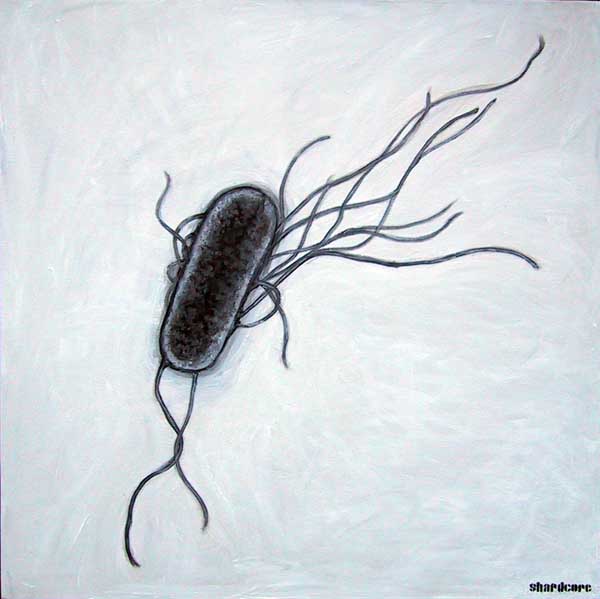Bacteria don't have to be icky
Feb 7, 2010, 10:30a - Science
(This is the second in a 3-post series on biology. The first post gave background on the various levels at which biologists analyze organisms. This post discusses bacteria and an interesting behavior that they have called chemotaxis. The last post will present a web app that's an interactive simulator of this behavior. And don't forget the bonus video post. Yes, I had originally thought this would all fit into 2 posts, but sometimes the chunkier the better.)
Alright, now on to the meat of things. I'm going to try to explain what I understand about bacterial chemotaxis as clearly as possible, so that it's accessible to anyone who's finished high school. I must prepare you, though, that it may get somewhat technical. Feel free to ask any questions in the comments, or to shoot me an email.
Bacteria are microscopic, single-cell organisms that are considered to be the most simple form of independent life. "Simplicity", as used here, just refers to the fact that a bacterium is small and so has fewer parts compared to any other independent organism. (As an aside, viruses are even simpler [fewer parts], but since they rely on other organisms to reproduce, they can't be counted in the "independent" category.) The species of bacteria that I'll be focusing on in this post is Escherichia coli. Yes, this very same species of bacteria lives in your gut and helps with your digestion, and some strains are known to make people nastily sick. The strains in which chemotaxis have been studied are non-infectious, though.

Artist's rendition of an individual E. coli. The capsule-shaped object is the single cell (~3 microns [millionths of a meter] in length), and the hair-like tendrils are the flagella, which a bacterium uses as propellers to move around.
So what exactly is chemotaxis? Chemotaxis is an organism's ability to move toward certain chemicals, such as sugar. A bacterium is able to move because it has flagella, which are wispy hairs that can spin like a propeller to propel a bacterium in different directions. When flagella spin in one direction (e.g. clockwise), the bacterium moves ahead, but when flagella spin in the other direction (e.g. counter-clockwise), the flagella get all tangled up, making the bacterium spin around like a bottle. Below is a video of E. coli swimming around (flagella are really tiny so you can't seem them at this resolution):
Ruggero
- Feb 18, 2010, 1:21a
I suppose that tumble probability increases with sugar concentration, so the bacteria spend more time in the area they like most.
nikhil
- Apr 12, 2010, 5:44p
That's an interesting idea which I haven't tried, but the conventional wisdom is actually the opposite. Based on what I've read, it seems that real bacteria actually tumble less when they're moving up a sugar gradient, and tumble more when they're moving down a sugar gradient, though they do adapt and return to a baseline tumbling rate.
It would be interesting to try your idea in the simulator (which I just posted) and see what happens. Unfortunately, there's no easy way to do this in the interface provided, so you'd have to change the javascript to try it out.
« A name change
-
Here's hoping the bacteria don't crawl off the screen »
|